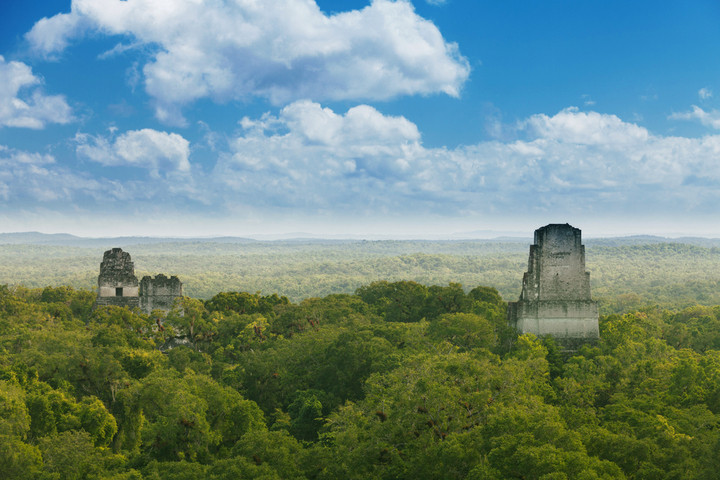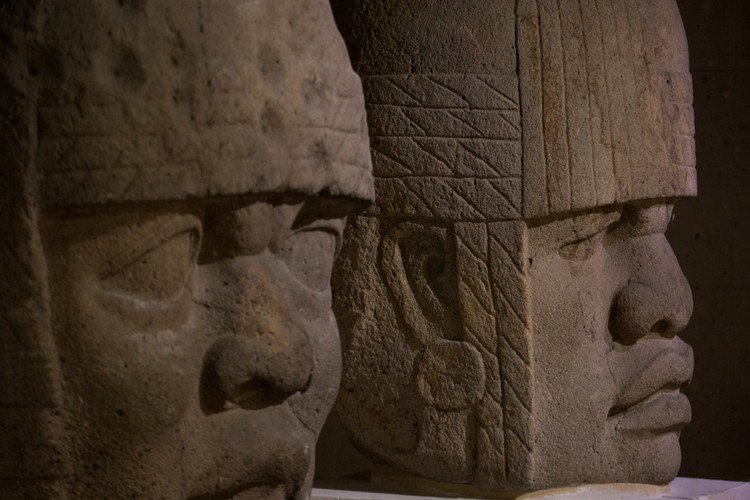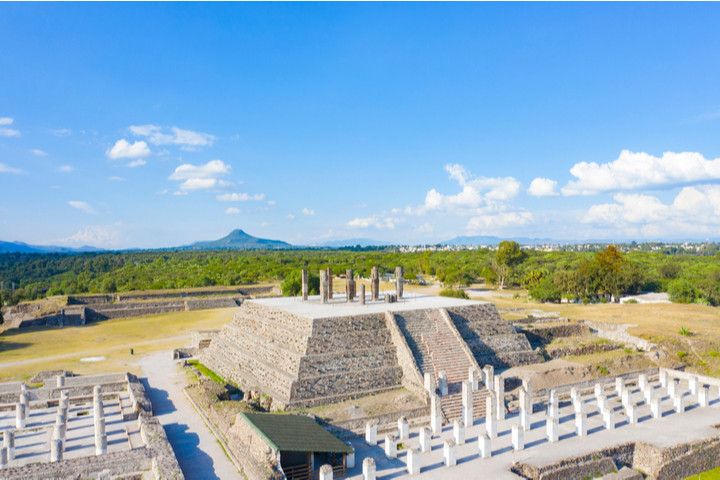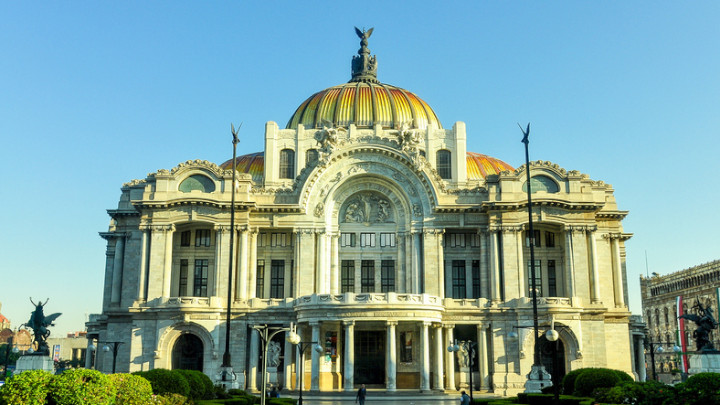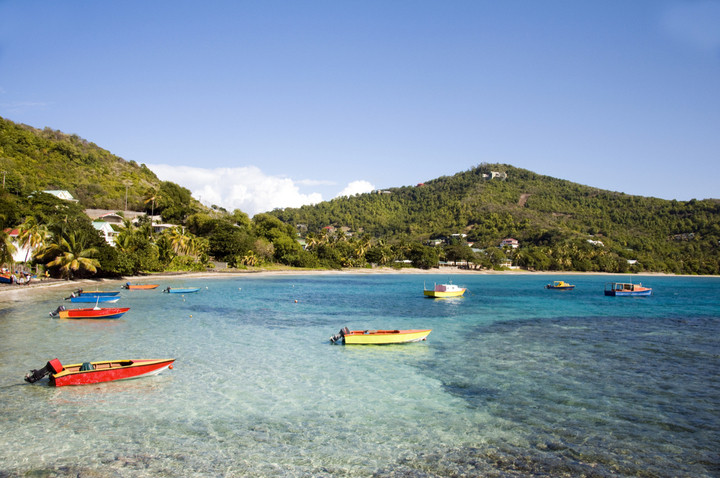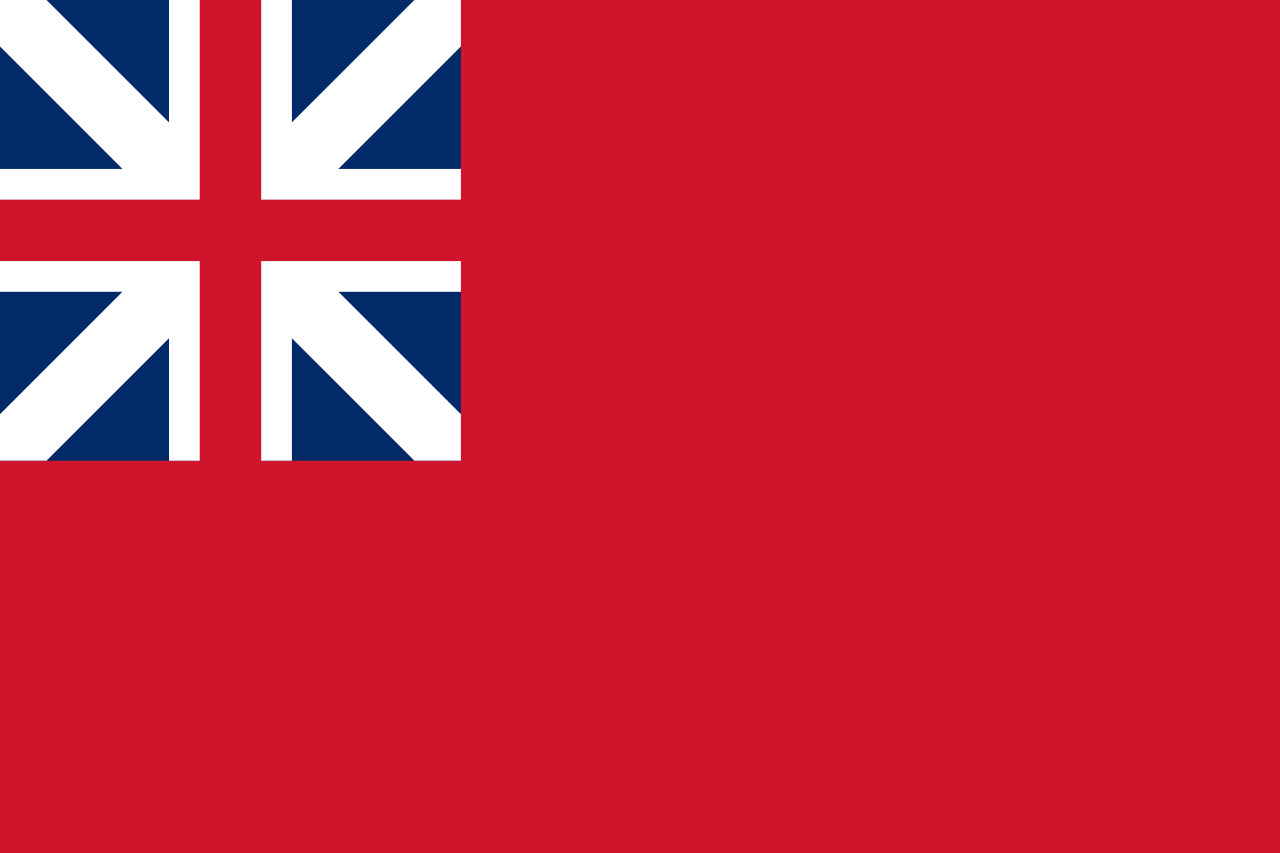This Mesoamerican civilization is nowadays well known for its pyramids, its big cities, its calendar… But for centuries it had totally disappeared under the vegetation, before it was discovered again at the end of the 19th century.
The Mayan civilization covered 15 centuries, from 600 BC until AD 900. For unknown reasons their civilization collapsed, but the Mayan people haven’t disappeared and are still living region today. So when the Spanish conquistadors discovered this part of the word in the 16th century, the Mayan civilization had already disappeared and they found the ruins of huge cities with pyramids. They couldn’t believe that the indigenous of this region (Maya) were descendant of such a prestigious civilization. For centuries, this civilization was remained forgotten before it was discovered again at the end of the 19th century.
Location
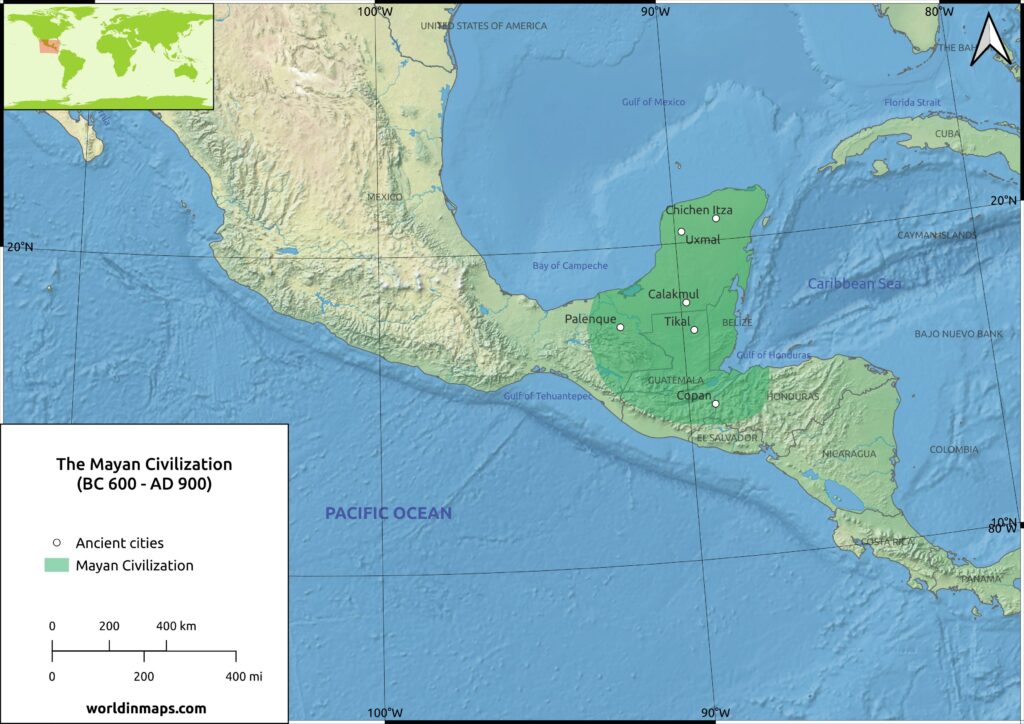
The Mayan civilization occupied a wide territory in the southeast of current Mexico and the north of Central America. The ancient Mayan city of Calakmul, located in the middle of the Yucatan Peninsula, was also located in the middle of the Mayan territory. This area included the Yucatan Peninsula (Mexico) and extended to the mountains of Guatemala and El Salvador and covered Belize and part of Honduras.
An important quantity of Mayan ruins has been discovered at the border between Mexico and Guatemala. This area corresponds to the heart of the Mayan civilization. This ruins includes temples, pyramids, palaces, …
Why is Mayan civilization not considered an empire?
It is important to note that Calakmul was not the capital city of the Maya. Indeed, the Mayan civilization was composed of several independent cities. Each of them had its own king and could dominate other, more little, cities. The most important of this independent cities were:
- Calakmul
- Tikal
- Uxmal
- Palenque
- Copan
Because of this, the Mayan civilization cannot be considered as an empire because it had never been unified politically.
When did the Mayan civilization begin and end?
Their civilization lasted for a very long period of time of 15 centuries. The beginning of the Mayan civilization is usually set at 600 BC and the end at AD 900.
The golden age of the Maya is located between AD 250 and AD 900. During their golden age, they have built big cities. Then for an unknown reason their civilization collapsed and the Maya scattered.
The Maya people
AD 900 is the end of the Mayan civilization, but the Maya people still live. The Maya are around 5 million. They are living in Central America. They are mainly living in little villages relatively isolated from the main roads.
The Maya still speak today the language of their ancestors : the Mayan language (which is composed of 28 different dialects).
History of the Mayan Civilization
The Mayan civilization started around 600 BC. With settlements of the first cities, like Tikal in 600 BC.
The first Mayan pyramid only appears at 300 BC. This is much later than the first pyramid of Mesoamerica. Indeed, the Olmecs were building pyramids as early as 1000 BC. For comparison, in the Mediterranean, the Egyptian were building pyramids from 3000 BC.
At the 8th century, the Mayan civilization had an area of around 324 000 km² (125 000 sq mi) and had impressive cities, like Tikal with its 50 000 inhabitants. The total population is estimated at 7 to 11 million people.
The golden age of the Maya goes from AD 250 until AD 900. Then the Mayan civilization disappeared. Uxmal is one of the last big Mayan cities. It was inhabited until around AD 1000, but some of the other big cities have disappeared long before.
The reasons of the end of the Mayan civilization remain unknown. But the archaeologists have some hypotheses to explain the collapsing of this civilization. The 2 main reasons that also could have played together are:
- Food problems due to overcrowding in certain places. The period between AD 800 to AD 850 is indeed marked by climatic changes that have brought less rain.
- The constant wars between the cities.
Like explained before, the Mayan civilization disappeared, but not the Maya. When a dynasty collapse, the Maya abandoned the city to take refuge in the forest and to form villages.
At the 16th century, the conquistadors discovered the Mayan territories. The Maya fought to defend their territories and their culture. But the Maya will be defeated and evangelized. However, the Maya that live nowadays have still conserved some belief of their ancestors.
During their conquest, the conquistadors were intrigued by the ruins of the pyramids. They didn’t believe that the population, they have discovered, are the descendant of a prestigious civilization.
During centuries, most of the Mayan cities remained covered by the vegetation. Until the end of the 18th century, where they are rediscovered.
One of the first cities discovered is Palenque (in the Mexican state of Chiapas) with its big palace.
Another one is the huge city of Tikal with its pyramid of 50 m (165 ft) height. This city was discovered in the forest in Guatemala.
By discovering the different archaeological sites, archaeologists not only discovered that the Maya were great architects, but that they were also great artists.
Architecture and Arts
The Mayan cities were composed of a downtown composed of public buildings. Around, we had residential districts. Temples were dominating the cities, which were indeed religious centers.
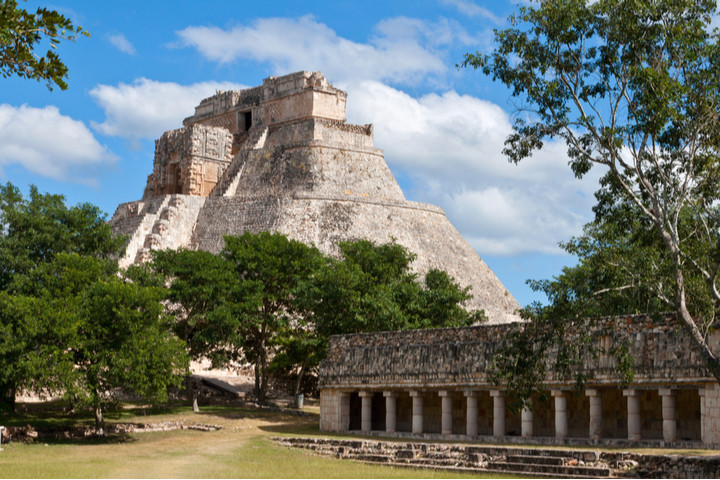
The pyramids were one of the symbols of the Maya. These pyramids were religious and political buildings. A temple was present at the top of the pyramid. From that temple, the kings leaded their religious ceremonies. Indeed, the king was a real god for its people. He is the link between its population and the forces of the nature. He really embodies all the forces of the nature and is able the command the rain, thunder, the corn harvest, … To ensure his power, the king built huge pyramids that dominated the whole city.
The first part of the pyramid is made of less and less wide pile of earth (pyramid like). Then the ground was recovered with stones that was maintained with mortar recovered the ground. The structure was then covered with stucco (a kind of plaster). This covering was finally painted, commonly in red.
Finally a temple was built on the top of the pyramid. A ridge was built on the top of the temple to make the building even a bit higher.
It is important to note that all the stone were transported on the backs of men because the Maya didn’t have draft animals. Indeed, they had neither oxen nor horses. Another important fact is that they didn’t know the metal. The only tools they had was made of stones. But even with this, they were able to build cities with thousands of people.
When the king died, he was buried on the top of the pyramid, under the temple. In some cities, when the new king was from the same dynasty, he let built his pyramid above the one of his predecessors. In that case, the previous pyramid was cover of ground and they built in the same way the new pyramid with stones, stucco and finally the painting. From generation to generation a certain number of pyramids could superposed on each other.
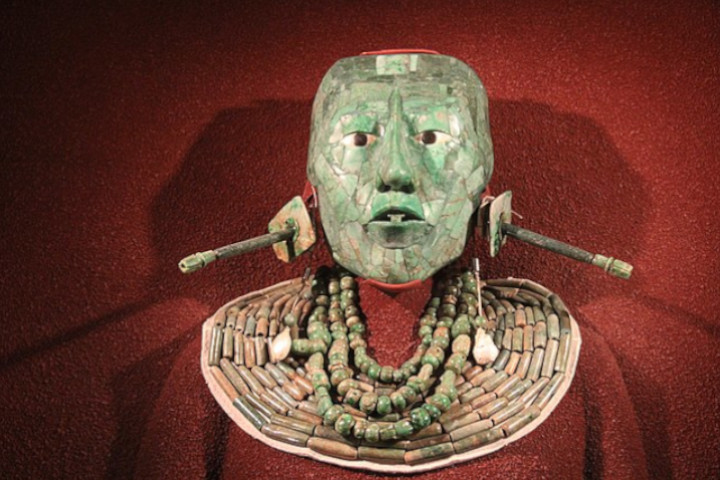
Maya were also artists. The dead kings were covered with jewels made of jade. The kings had also a funeral mask. Only important persons of the Mayan society were buried like this. Normally, the Maya buried their dead under their homes.
On the temples, we can also find numerous representation of the underworld monster.
One of the big difficulties of these big cities, was the water supply of the population. Indeed, the calcareous soils allow the easy infiltration of water. In consequence, there are few rivers in this region. The Maya had developed a system to stock the water during the rain season. The aquadas are kind of lakes that could contain enough water to supply the big population of cities with water during the dry season. In some regions, collapse craters in the calcareous rocks were giving direct access to the ground water. These are natural wells and are called Cenotes. They were sacred for the Maya. In the mountain regions, the water was channeled in an aqueduc that was arriving directly in the city, like in Palenque.
The Mayan society
The Mayan society is composed of different social levels. On the top of the social pyramid, the king is the political and religious chief. He led the religious ceremonies. Priests helped him in this task. All these ceremonies are led by the king in the temple located at the top of its pyramid. The Kings had also a palace near the religious center of the city.
In the city, there is also a “high society” composed of military chiefs, officials like tax collectors or in charge to collect tributes from subjugated cities, merchants and craftsmen.
The nobles were living in palaces and their servants were living in stone homes. These homes were made of a courtyard with some rooms around it. All the family was living in it (brothers, sisters, cousins, …). These homes were not very big, but their floor was made of stones and often elevated to serve as beds.
Farmers lived a bit outside the cities. They are responsible for providing food and clothes to the community. They were also used as labor for the construction of public building. Their homes were similar to some of the homes of current Mayan farmers. They were composed of little wall of stones, with above a wood structure and daub. Finally, the roof is made from palm branches.
Finally, we have the slaves. They are used at every level of the social pyramid. Generally they are war prisoners. These slaves have the possibility to buy their freedom.
Food and agriculture
The Maya cultivated corn, squash, beans and peppers. It was the base of their diet. They also practiced turkey farming. It is the conquistadors that has discovered the turkey and imported them to Europe.
Finally, the Maya also ate dogs.
The Mayan calendar
The Maya were brilliant astronomers that knew the lunar and solar cycles. They had a first solar calendar with precisely 365 days. It was divided into 18 months of 20 days and a month of 5 days.
Next to this first calendar, they had a second ritual calendar. The second calendar was composed of 20 days with 13 different positions. So the second calendar had a total of 260 days. The priests interpreted this calendar and were pretending to know good and bad days, based on this calendar.
These two calendars progressed in parallel. Each date was composed of two elements. A first position on the ritual calendar and a second position on the solar calendar. By consequence, 52 years were needed to return on the same date.
These two calendars are common to all the Mesoamerican civilizations. But the Maya had also defined the origin of the world at 3114 BC. And they counted the time from that initial date. This date corresponds to the start of a long cycle of more than 5000 years. That cycle ended at 2012.
For the Maya, the time is defined in cycles and the most important was the Katun (cycle of nearly 20 years). At the end of each Katun, each cities organised big ceremonies in the honor of the supernatural powers so that they are favorable for the next Katun.
The Mayan sacrifices
During the ceremonies at the end of a Katun, the king practiced self sacrifice. He was perforating its tong (or other part of the body) with sharp and cutting tools. And he was spreading his blood. The king was the most important person for the Maya. So their thinking was that his sacrifice will allow his people to continue to live, because he will have payed a debt to the supernatural power from which their lives on earth depended.
Sometimes, the Maya also practiced the human sacrifice of prisoners captured during wars.
The Mayan ballgame
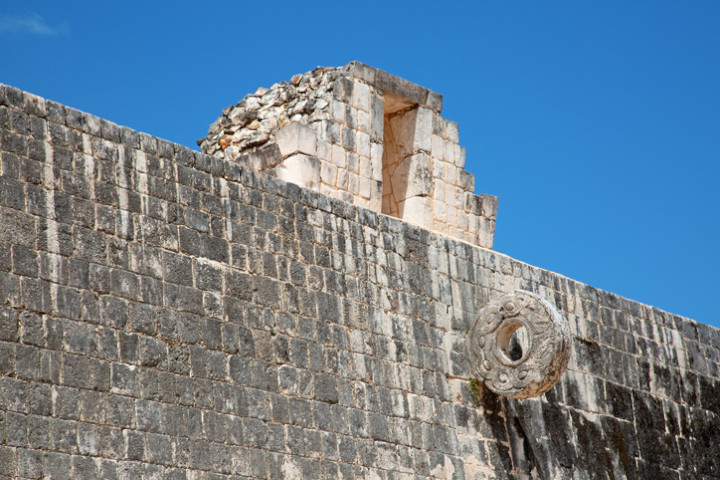
Another Mayan ritual is the ballgame. In this game, two teams were throwing a heavy rubber ball by touching the ball only with their elbows, hips and knees. They had to hit targets or pass the ball through a ring.
The ballgame was a religious game that symbolized the fight against the dead. And at the end of the game, some players were sacrificed.
Language and Mayan writing system (Mayan glyphs)
Like previously explained, the Mayan civilization has disappeared, but not the Mayan culture. That is why the Mayan language is still spoken today by the descendants of the Mayan civilization and it has 28 dialects. But the writing system is not more used and known by their descendants.
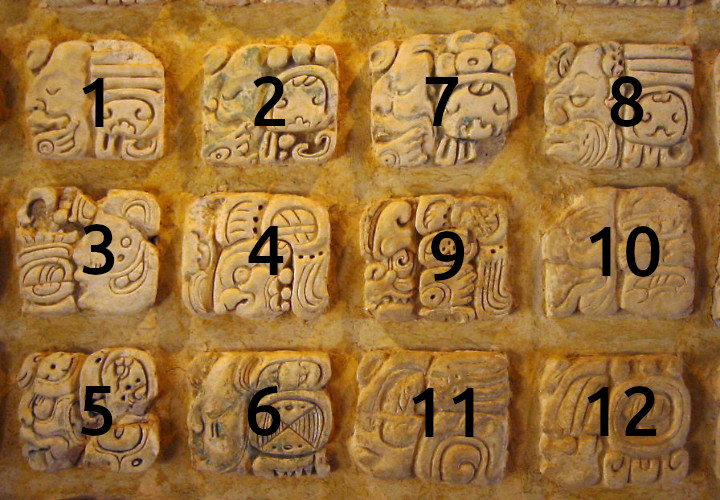
For a long time, the Mayan writing system (or Mayan glyphs) was an enigma. But today, linguists were able to deciphered 80% of the glyphs. The Mayan had an advanced writing system composed of 1200 symbols (glyphs). It is read from left to right and from top to bottom. But every 2 glyphs we go down to the next line. So it is read in columns of 2 symbols. When the first column is read, we go to the second column and so on.
Each glyph can represent an object, an animal, a person, an action, but some glyphs correspond to syllables and when we associated these syllables we can create words.
By consequence, the Mayan writing is very difficult to read because a glyph can represent a word or a syllable. As a result, only the elite of the Mayan population mastered the writing.
Some texts were written in books made of bark paper and named codex (codices in plural). During the conquest by the Europeans, the Europeans burned all the codices and nowadays, only 4 codices remain in the world.
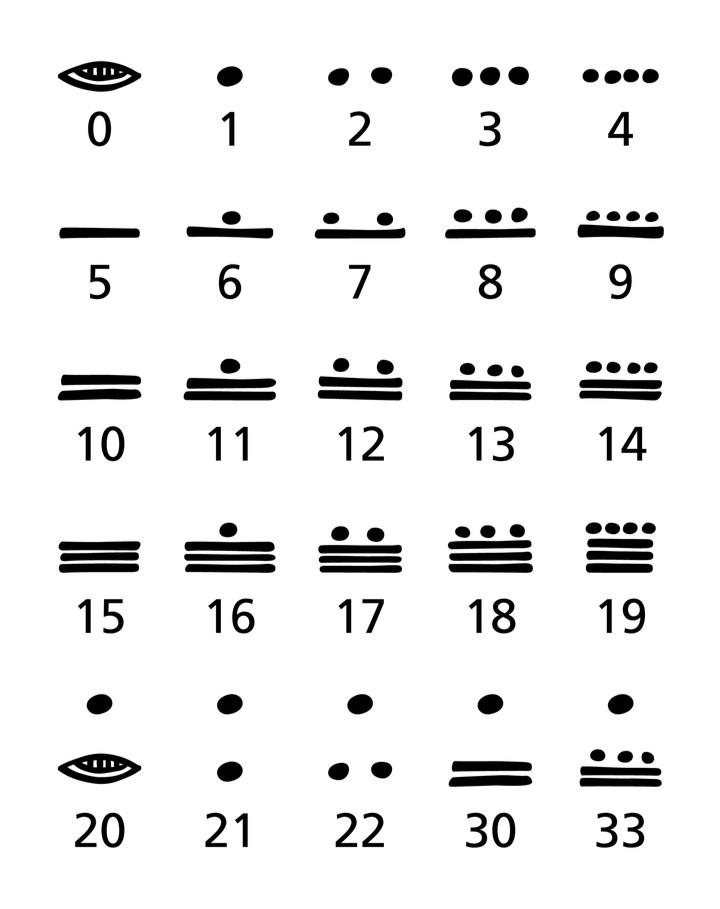
The Mayan had also developed a numeral system to write their numbers and was allowing them to make all kinds of operations. It was a vigesimal (base 20) numeral system. The shell represented the zero, a dot the number one and a bar the number five.
So because of its base 20, the unities are going from 0 to 19, then we have from 20 to 399, then from 400 until 7999 and so on.
